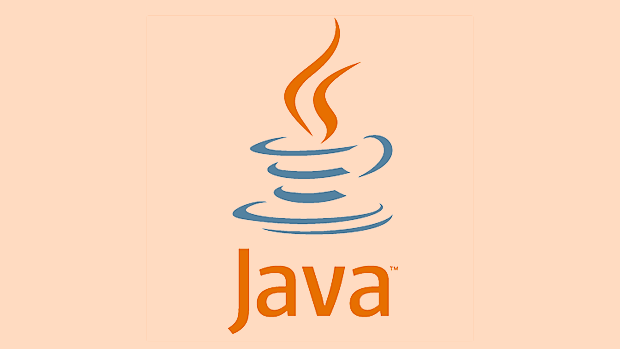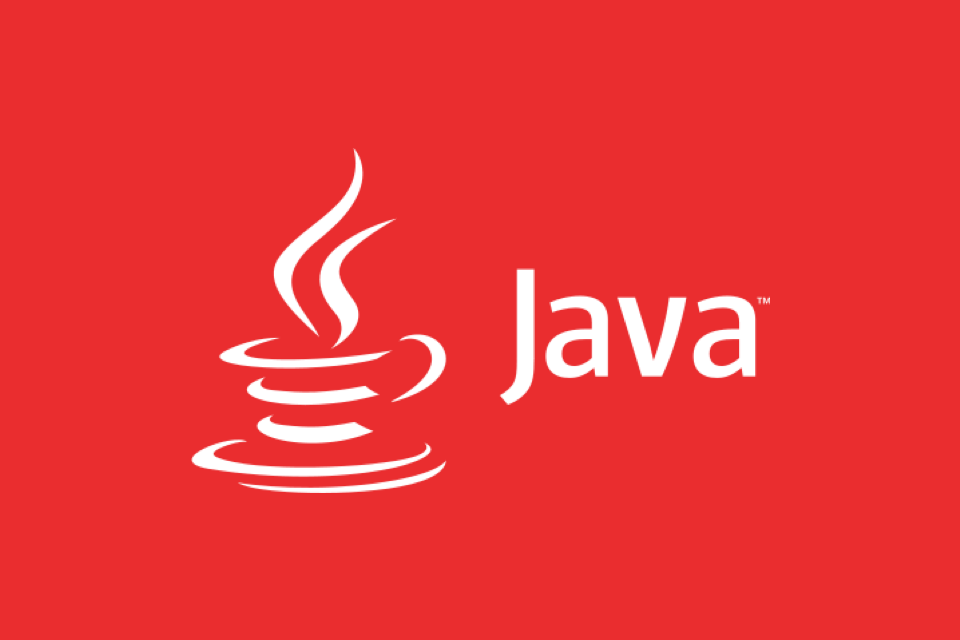 Java
Java
 javaTutorial
javaTutorial
 What are the different types of garbage collectors in Java (G1, ZGC, Shenandoah)?
What are the different types of garbage collectors in Java (G1, ZGC, Shenandoah)?
What are the different types of garbage collectors in Java (G1, ZGC, Shenandoah)?
Jul 12, 2025 am 01:13 AMThere are three mainstream collectors in Java's garbage collection mechanism: G1, ZGC and Shenandoah. 1. G1 is suitable for 4GB to tens of GB of heap memory, taking into account both throughput and response time, and the pauses are controllable but not as low as the latter two; 2. ZGC is aimed at super large heap (TB level) and extremely low latency (

Java's garbage collection mechanism is one of its core features, and different garbage collectors (Garbage Collectors, GCs) have their own emphasis on performance, pause time, throughput, etc. If you use Java for development, especially server-side applications, it is important to understand the characteristics and applicable scenarios of different GCs.

Currently, the three mainstream modern garbage collectors are G1, ZGC and Shenandoah. Their goal is to reduce the impact of GC on program performance, but it is different in implementation and applicable scenarios.
What is a G1 garbage collector?
G1 (Garbage-First) first appeared in JDK 7, with the goal of replacing CMS (Concurrent Mark-Sweep). It divides the heap memory into multiple regions of equal size (regions), which can prioritize the recycling of the most garbage, so it is called "Garbage First".

Suitable for scenarios:
- Large heap memory (such as 4GB to dozens of GB)
- There are certain requirements for pause time but not extreme harsh
- Throughput and response time need to be balanced
advantage:

- Predictable pause time control
- Supports concurrent tagging and parallel recycling
- Relatively stable, community support mature
shortcoming:
- The pause time is still a little longer than ZGC and Shenandoah
- A little high memory usage
When using G1, it can be enabled via -XX: UseG1GC .
What is ZGC? What situations are suitable?
ZGC (Z Garbage Collector) is a low-latency GC introduced in JDK 11. Its design goal is to keep GC pause time at single-digit milliseconds level, even if the heap memory reaches TB level.
Suitable for scenarios:
- The heap is very large (several GB to TB level)
- Very low pause time required (
- Systems with high real-time requirements, such as financial transaction systems or online services
Key Features:
- Concurrent execution is higher, and almost all stages can be performed concurrently with application threads.
- Use Colored Pointers to record object status and reduce scan range
- Support NUMA architecture optimization to improve multi-core machine performance
limit:
- 32-bit system not supported
- On some operating systems (such as Windows) support is late, and early versions may not be mature enough
The parameter to enable ZGC is -XX: UseZGC , suitable for Linux or newer versions of Windows/macOS.
What is the difference between Shenandoah and other GCs?
Shenandoah is another low-latency GC led by Red Hat. Similar to ZGC, it also pursues submillisecond pause times. But it appeared earlier, initially introduced in OpenJDK 12.
Key Advantages:
- The pause time has nothing to do with the heap size
- Almost all stages can be executed concurrently, including concurrent compression
- More suitable for response time-sensitive applications than G1
Differences in implementation:
- It does not rely on dye pointers, but manages object references through a Load Reference Barrier
- This allows it to run on more platforms and JVM implementations (such as non-HotSpot)
Recommended usage:
- If you are using distributions like OpenJDK or Adoptium and want to take into account performance and low latency, consider Shenandoah
- It has slightly higher requirements for CPU resources because there are more concurrent operations
The parameter to enable Shenandoah is -XX: UseShenandoahGC .
In general, these three GCs have their own expertise:
- G1 is a relatively general choice and is suitable for most medium and large applications.
- ZGC is more inclined toward superheap and extreme low latency, suitable for systems with high requirements for real-time performance.
- Shenandoah is much like ZGC, but it is slightly different in implementation details and support platforms.
Which GC to choose actually depends on your specific scenario, such as how big the stack is, whether it tolerate short pauses, whether there are special requirements for throughput, etc. Testing and stress testing are the most reliable methods of judgment.
Basically that's it.
The above is the detailed content of What are the different types of garbage collectors in Java (G1, ZGC, Shenandoah)?. For more information, please follow other related articles on the PHP Chinese website!

Hot AI Tools

Undress AI Tool
Undress images for free

Undresser.AI Undress
AI-powered app for creating realistic nude photos

AI Clothes Remover
Online AI tool for removing clothes from photos.

Clothoff.io
AI clothes remover

Video Face Swap
Swap faces in any video effortlessly with our completely free AI face swap tool!

Hot Article

Hot Tools

Notepad++7.3.1
Easy-to-use and free code editor

SublimeText3 Chinese version
Chinese version, very easy to use

Zend Studio 13.0.1
Powerful PHP integrated development environment

Dreamweaver CS6
Visual web development tools

SublimeText3 Mac version
God-level code editing software (SublimeText3)

Hot Topics
 How Java ClassLoaders Work Internally
Jul 06, 2025 am 02:53 AM
How Java ClassLoaders Work Internally
Jul 06, 2025 am 02:53 AM
Java's class loading mechanism is implemented through ClassLoader, and its core workflow is divided into three stages: loading, linking and initialization. During the loading phase, ClassLoader dynamically reads the bytecode of the class and creates Class objects; links include verifying the correctness of the class, allocating memory to static variables, and parsing symbol references; initialization performs static code blocks and static variable assignments. Class loading adopts the parent delegation model, and prioritizes the parent class loader to find classes, and try Bootstrap, Extension, and ApplicationClassLoader in turn to ensure that the core class library is safe and avoids duplicate loading. Developers can customize ClassLoader, such as URLClassL
 Asynchronous Programming Techniques in Modern Java
Jul 07, 2025 am 02:24 AM
Asynchronous Programming Techniques in Modern Java
Jul 07, 2025 am 02:24 AM
Java supports asynchronous programming including the use of CompletableFuture, responsive streams (such as ProjectReactor), and virtual threads in Java19. 1.CompletableFuture improves code readability and maintenance through chain calls, and supports task orchestration and exception handling; 2. ProjectReactor provides Mono and Flux types to implement responsive programming, with backpressure mechanism and rich operators; 3. Virtual threads reduce concurrency costs, are suitable for I/O-intensive tasks, and are lighter and easier to expand than traditional platform threads. Each method has applicable scenarios, and appropriate tools should be selected according to your needs and mixed models should be avoided to maintain simplicity
 Understanding Java NIO and Its Advantages
Jul 08, 2025 am 02:55 AM
Understanding Java NIO and Its Advantages
Jul 08, 2025 am 02:55 AM
JavaNIO is a new IOAPI introduced by Java 1.4. 1) is aimed at buffers and channels, 2) contains Buffer, Channel and Selector core components, 3) supports non-blocking mode, and 4) handles concurrent connections more efficiently than traditional IO. Its advantages are reflected in: 1) Non-blocking IO reduces thread overhead, 2) Buffer improves data transmission efficiency, 3) Selector realizes multiplexing, and 4) Memory mapping speeds up file reading and writing. Note when using: 1) The flip/clear operation of the Buffer is easy to be confused, 2) Incomplete data needs to be processed manually without blocking, 3) Selector registration must be canceled in time, 4) NIO is not suitable for all scenarios.
 Best Practices for Using Enums in Java
Jul 07, 2025 am 02:35 AM
Best Practices for Using Enums in Java
Jul 07, 2025 am 02:35 AM
In Java, enums are suitable for representing fixed constant sets. Best practices include: 1. Use enum to represent fixed state or options to improve type safety and readability; 2. Add properties and methods to enums to enhance flexibility, such as defining fields, constructors, helper methods, etc.; 3. Use EnumMap and EnumSet to improve performance and type safety because they are more efficient based on arrays; 4. Avoid abuse of enums, such as dynamic values, frequent changes or complex logic scenarios, which should be replaced by other methods. Correct use of enum can improve code quality and reduce errors, but you need to pay attention to its applicable boundaries.
 What is a Singleton design pattern in Java?
Jul 09, 2025 am 01:32 AM
What is a Singleton design pattern in Java?
Jul 09, 2025 am 01:32 AM
Singleton design pattern in Java ensures that a class has only one instance and provides a global access point through private constructors and static methods, which is suitable for controlling access to shared resources. Implementation methods include: 1. Lazy loading, that is, the instance is created only when the first request is requested, which is suitable for situations where resource consumption is high and not necessarily required; 2. Thread-safe processing, ensuring that only one instance is created in a multi-threaded environment through synchronization methods or double check locking, and reducing performance impact; 3. Hungry loading, which directly initializes the instance during class loading, is suitable for lightweight objects or scenarios that can be initialized in advance; 4. Enumeration implementation, using Java enumeration to naturally support serialization, thread safety and prevent reflective attacks, is a recommended concise and reliable method. Different implementation methods can be selected according to specific needs
 How to handle exceptions properly in Java?
Jul 06, 2025 am 02:43 AM
How to handle exceptions properly in Java?
Jul 06, 2025 am 02:43 AM
The key to handling exceptions in Java is to catch them, handle them clearly, and not cover up problems. First, we must catch specific exception types as needed, avoid general catches, and prioritize checkedexceptions. Runtime exceptions should be judged in advance; second, we must use the log framework to record exceptions, and retry, rollback or throw based on the type; third, we must use the finally block to release resources, and recommend try-with-resources; fourth, we must reasonably define custom exceptions, inherit RuntimeException or Exception, and carry context information for easy debugging.
 What is an anonymous inner class?
Jul 07, 2025 am 02:18 AM
What is an anonymous inner class?
Jul 07, 2025 am 02:18 AM
Anonymous internal classes are used in Java to create subclasses or implement interfaces on the fly, and are often used to override methods to achieve specific purposes, such as event handling in GUI applications. Its syntax form is a new interface or class that directly defines the class body, and requires that the accessed local variables must be final or equivalent immutable. Although they are convenient, they should not be overused. Especially when the logic is complex, they can be replaced by Java8's Lambda expressions.
 Java String vs StringBuilder vs StringBuffer
Jul 09, 2025 am 01:02 AM
Java String vs StringBuilder vs StringBuffer
Jul 09, 2025 am 01:02 AM
String is immutable, StringBuilder is mutable and non-thread-safe, StringBuffer is mutable and thread-safe. 1. Once the content of String is created cannot be modified, it is suitable for a small amount of splicing; 2. StringBuilder is suitable for frequent splicing of single threads, and has high performance; 3. StringBuffer is suitable for multi-threaded shared scenarios, but has a slightly lower performance; 4. Reasonably set the initial capacity and avoid using String splicing in loops can improve performance.





